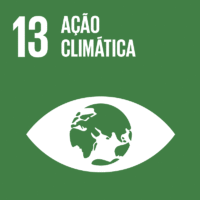Ciência_Iscte
Publicações
Descrição Detalhada da Publicação
Beliefs on the local effects of climate change: causal attribution of flooding and shoreline retreat
Título Revista
Journal of Integrated Coastal Zone Management
Ano (publicação definitiva)
2017
Língua
Inglês
País
Portugal
Mais Informação
Web of Science®
Scopus
Google Scholar
Esta publicação não está indexada no Overton
Abstract/Resumo
Adaptation to climate change is a process that should engage different participants, including not only researchers and technicians but also other stakeholders and local individuals, and, therefore, it is important to understand their beliefs on the local effects of climate change. Recent studies illustrate a linear relation between coastal distance and scepticism, which is lower in coastal zones than in inland. A possible explanation is that people living inland do not experience (or do not perceive) particular natural hazards as being caused by climate change, or attribute the natural hazards to other causes, apart from climate change. This might influence the relative importance of dealing with direct anthropogenic effects and planning adaptation to climate change. Therefore, the goal of this work was to explore this effect by comparing beliefs on the local effects of climate change in Aveiro region (Portugal), specifically in Baixo Vouga Lagunar (BVL, located in the inner side of Ria de Aveiro Coastal Lagoon, 10 km distance from the coast) with the nearby coastal zone between Esmoriz and Vagueira settlements. Stakeholders were interviewed and local individuals were surveyed in order to explore causal attributions towards relevant local environmental problems and compare with data available from the coastal zone. Natural hazards concerned flooding in BVL and shoreline retreat in the coastal zone. Results suggest that in BVL both stakeholders and local residents did not attribute local natural hazards mostly to climate change. However, in the coastal zone, local natural hazards were indeed mostly attributed to climate change. This attribution to climate change was further correlated to a higher risk perception of natural hazards in the coastal zone but not in BVL. Thereby, it is important to consider distance from the shoreline in order to promote local processes of adaptation to climate change.
Agradecimentos/Acknowledgements
--
Palavras-chave
Causal attribution,Risk perception,Local individuals,Stakeholders,Aveiro Lagoon,anthropogenic activities
Classificação Fields of Science and Technology
- Ciências da Terra e do Ambiente - Ciências Naturais
- Ciências Biológicas - Ciências Naturais
- Agricultura, Silvicultura e Pescas - Ciências Agrárias
Registos de financiamentos
| Referência de financiamento | Entidade Financiadora |
|---|---|
| CIRCLE-MED/0002/2013 | Fundação para a Ciência e a Tecnologia |
| UID/GES/00315/2013 | Fundação para a Ciência e a Tecnologia |
| UID/PSI/03125/2013 | Fundação para a Ciência e a Tecnologia |
| UID/AMB/50017/2013 | Fundação para a Ciência e a Tecnologia |
| PEst-OE/EGE/UI0315/2014 | Fundação para a Ciência e a Tecnologia |
| CIRCLE-MED/0001/2013 | Fundação para a Ciência e a Tecnologia |
Contribuições para os Objetivos do Desenvolvimento Sustentável das Nações Unidas
Com o objetivo de aumentar a investigação direcionada para o cumprimento dos Objetivos do Desenvolvimento Sustentável para 2030 das Nações Unidas, é disponibilizada no Ciência_Iscte a possibilidade de associação, quando aplicável, dos artigos científicos aos Objetivos do Desenvolvimento Sustentável. Estes são os Objetivos do Desenvolvimento Sustentável identificados pelo(s) autor(es) para esta publicação. Para uma informação detalhada dos Objetivos do Desenvolvimento Sustentável, clique aqui.

 English
English


